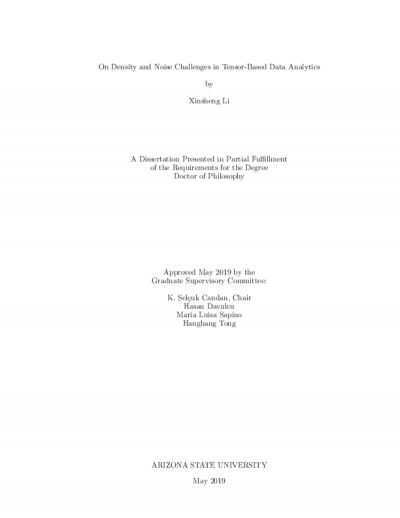On Density and Noise Challenges in Tensor-Based Data Analytics

Description
Many real-world problems, such as model- and data-driven computer simulation analysis, social and collaborative network analysis, brain data analysis, and so on, benefit from jointly modeling and analyzing the underlying patterns associated with complex, multi-relational data. Tensor decomposition is an ideal mathematical tool for this joint modeling, due to its simultaneous analysis of such multi-relational data, which is made possible by the data's multidimensional, array-based nature. A major challenge in tensor decomposition lies with its computational and space complexity, especially for dense datasets. While the process is comparatively faster for sparse tensors, decomposition is still a major bottleneck for many applications. The tensor decomposition process results in dense (hence, large) intermediate results, even when the input tensor is sparse (or small). Noise is another challenge for most data mining techniques, and many tensor decomposition schemes are sensitive to noisy datasets; this is an inevitable problem for real-world data, which can lead to false conclusions. In this dissertation, I develop innovative tensor decomposition algorithms for mining both sparse and dense multi-relational data in a noise-resistant way. I present novel, scalable, parallelizable tensor decomposition algorithms, specifically tuned to be effective for dense, noisy tensors, and which maintain the quality of the resulting analysis. Furthermore, I present results on multi-relational data applications focusing on model- and data-driven computer simulation analysis, as well as social network and web mining, which demonstrate the effectiveness of these tensor decompositions.
Date Created
The date the item was original created (prior to any relationship with the ASU Digital Repositories.)
2019
Agent
- Author (aut): Li, Xinsheng
- Thesis advisor (ths): Candan, Kasim S
- Committee member: Davulcu, Hasan
- Committee member: Sapino, Maria L
- Committee member: Tong, Hanghang
- Publisher (pbl): Arizona State University
